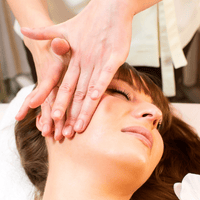Mind-Body Link: Too Busy To Be Cured?

Is Healing A Pain in the Backside?
We all know that pain can be a ‘right pain the backside'. We want to get on with our lives, doing what we normally do and we want to be like we were before the pain came on. Quite simply are you too busy to be cured? Rediscover the mind-body link today!
Our response to pain is often to try and overrule it, and not let the pain get in the way of doing what we want. As one advert for Neurofen says, “pain should never be in charge of your day“. Whilst that may be true for some pains, it gives the over-arching signal that pain is something that can be, and should be dismissed. This fosters a way of thinking that can work against healing.
So which personality types are at risk of falling prey to this way of thinking? At our clinic in Raynes Park SW London, we see two types of patients. Those gripped by fear who avoid almost any action, and those who push the pain out of their mind to carry on as usual.
The carry-on personalities are the ones that I call “Busy-Bee” people. They are typically on the go from AM to PM. They are active, getting on with work, family, children, sports, gardening etc. They will often go through the pain barrier intentionally (or for some, without realising it) just to get a task done. If this is you, read on please!
So what is going on? How do we manage to do this, and what effect does this have on healing?
How We Beat The Pain Barrier?
In nature, our brain is continually being fed information that we are already busy ignoring. For example, if you are sitting reading this article, you may be aware of your buttocks sitting on the chair on reading this sentence. It's only when you think of it you feel your buttocks. We may have felt the buttocks when we first sat down, but quickly after, we stopped feeling them. In exactly the same way when people live near a railway, they stop hearing trains after a while, even though the trains still pass by.
There is a part of the brain known as the reticular formation whose job it is, amongst other actions, to filtre out things, including pain. This mechanism is already natural to us. When we beat the pain barrier, this is largely how we do it.
However this mechanism can also be invoked unwittingly. For example, when you have too many things to juggle, are under pressure, when you need to keep going, etc.
There are two consequences to this, Sudden Tipping-point and Insidious Tipping-point.
1. Sudden Tipping-Point
Eventually, blanking-out the pain prevents us from being in touch with the damage that may be taking place deep within the body. This might be ok for the short term, but over time such damage can build up until it reaches a tipping-point. That's when tissue failure and pain strike without notice. For example the patient may say “I just twisted in the shower” or “I just bent forward to lift the kettle”.
2. Insidious Tipping-Point
Sometimes, people never reach a specific tipping point. The pain builds up so gradually and slowly, that there is no specific time or event when the tissue slipped into failure. Typically, these people may have been drip-fed longer-term stress, mental, physical, emotional, or a mixture of. This may have been accompanied by poor sleep or extra stress / workload in their lives.
In these cases the person may say, “It just came on over the last two months – I don't know exactly when” or “I don't know what I did, the pain just came on”.
The consequences of any tipping-point can be frightening. Muscles may go suddenly go into spasm, it may be difficult to move normally or to find any position to ease the pain, the pain itself may be overpowering. Pain can cause acute fear or anxiety. This itself can magnify pain and make tissues more sensitive.
How to Fight This?
As we know our body doesn't deliberately sabotage itself – just to annoy us. If we are in pain it means something somewhere must have got hurt, even if we were unaware of how it arose. And that is the key to understanding how to beat this – accepting that we have lost touch with our body's pain signals, missing out on hearing what the body is saying to us.
Remember, our wonderful, beautiful body will always do its best to keep us going, to help us keep our head above water. When we are overdoing it, our body gives us plenty of warning by laying out a ‘bread-crumb trail' of little signs that it is not coping. So what are these little signs that we may have been missing?
The Patient History
Part of the answer is found in the case-history. Healthcare professionals like Osteopaths know what we are looking for – the red flags, any high-risk activity, the key moments, the build-up pattern and much more. We share this information with the patient so you get control back in your life. We offer suggestions on coping when you still have to keep going. You don't always have to stop work, or give up something you love doing. We just need to find the right path to help you through it.
Re-connect The Mind and Body
A large part of Osteopathy is to help our patients re-connect their body-mind link. We show you how to bring this back to life, helping you to re-programme the brain's reticular formation, the mechanism that filtres out pain.
One of the key stepping stones to achieving this is to create a list what to do, what to avoid, and for how long. It is our expertise in this field that we share with you, helping you to reaching this awareness.
How to Increase Your Body Awareness
We can also help by showing you how to actively engage in your body's “early warning system”. As previously mentioned in the we can take you through the steps to apply his to the entire body. Here is how to do it. Think of it as a form of body meditation.
If you feel your life is too busy to do this each day, it's a sure sign you need this! As we say to our patients, “you won't be impoverished by losing 3 minutes from your day”.
Start by lying down on your back with your knees straight and arms splayed gently outward, and your eyes closed.
Breathe normally. We are going to ‘feel' each body part in turn. Start by feeling your right foot. In your mind's eye, feel the sole of your foot, then feel the top-part of the foot. Take your time and really feel and be aware of it. Next, feel the left foot in the same way. Then following this pattern, feel the lower leg, working your way up through every body part, until you reach your head.
Your Early Warning System
Over time you will be able to practice this whilst sitting, standing or even walking. It will also help you develop the intuitive sense that if you don't take rest / corrective action now, your pain may re-surface. In short, you will develop an amazing early warning system, if you practice this.
And that's a great way to look after yourself and remain pain-free!

Ask me your question
Fill in a form click here
Email me click here
Fill in form to receive articles just like this when they are published.
– fill in the optional section to get discounts / offers on our treatments.
Vispi Jamooji DO PG Cert SPOP
Registered Osteopath (London, 1986)
Specialist Paediatric Osteopath & Cranial Osteopath
Living Centre Clinic
32 Durham Road, Raynes Park, London SW20 0TW
better@livingcentreclinic.com
020 8946 2331











